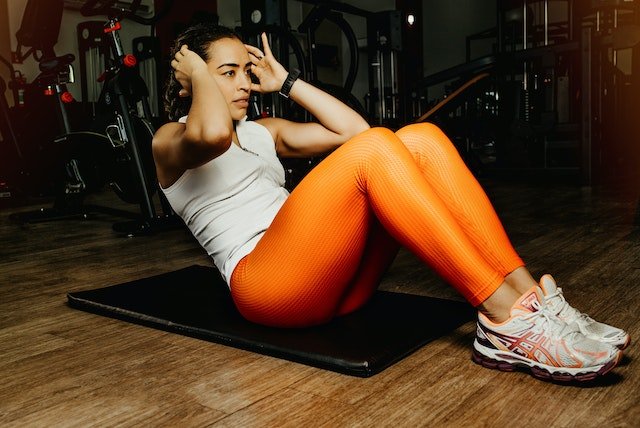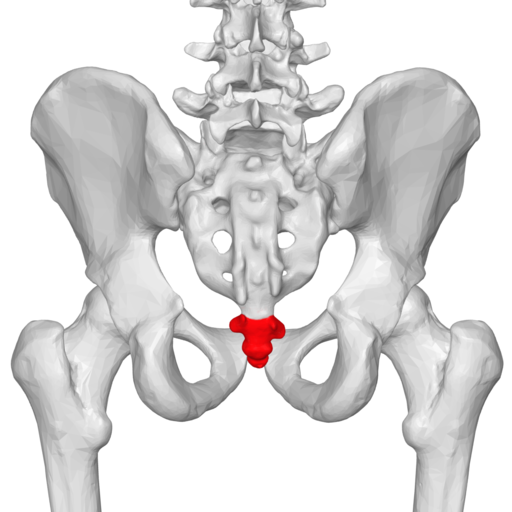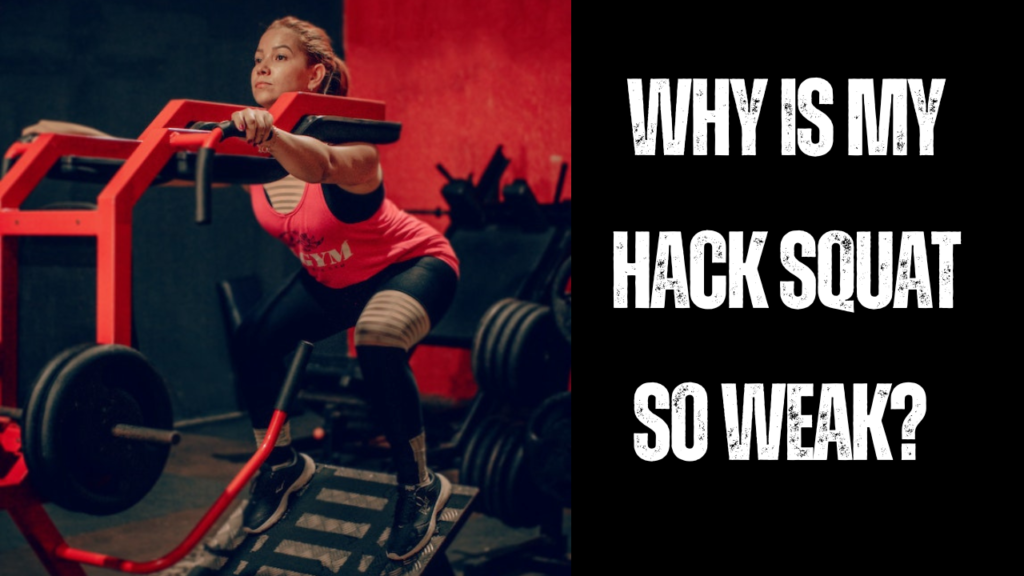
Tailbone Pain Doing Sit Ups? 11 Tips To Fix Issue
If you’re looking to improve your core strength, sit ups are the staple ab exercise people incorporate into their fitness routine. However, for some people performing the sit up correctly can be a real challenge. Not only can it cause strain on the tailbone (coccyx) but also aggravate any existing pain – so why is that?
It leaves many asking “why does my tailbone hurt when doing sit ups”. There are numerous reasons why this may happen, but normally it’s a fairly simple issue that can be resolved easily enough.
In this blog post, we’ll explore why exactly you may be suffering from tailbone discomfort or even pain while doing sit ups, and how you can avoid (or minimise) these effects in future workouts. Read on to learn more!
Why Do I Get Tailbone Pain Doing Sit Ups?
The main reason why your tailbone may hurt when doing sit ups is due to poor form. When performing a sit up, it’s essential to ensure that you are engaging your core correctly and not placing too much pressure on the tailbone area. This can be difficult to do, particularly if you have a longer than average tailbone (coccyx) length. Another common reason why your tailbone may hurt while doing sit ups is due to a lack of neutral spine position. This means that you need to be mindful of keeping your spine in its natural alignment when performing the exercise and try not to arch or hunch your back too much as this can put extra strain on the tailbone. Finally, if you are performing sit ups on a hard surface such as a floor, this can create more pressure on the tailbone and result in pain or discomfort. If possible, try to use a gym mat or an exercise ball instead – these create a softer surface for you to work out on and may help lessen any strain on the tailbone area.
If you’re suffering from tailbone pain when performing sit ups, there are a few things you can do to help lessen this discomfort and ensure that you don’t put too much strain on the area.
The tailbone
The tailbone or coccyx is the triangular-shaped bone at the base of your spine and is comprised of 3-5 separate vertebrae. It is a relatively delicate area and can be susceptible to injury, particularly due to its vulnerable position between two larger bones (the sacrum and the ilium).
There’s little protection around the coccyx and it is relatively easy to overload or bruise this area, which can often result in pain or discomfort. The tailbone is also susceptible to a number of medical issues such as pilonidal cysts and coccydynia (tailbone pain).
It also takes the brunt of the force when falling over on your bottom and doing certain exercises, such as sit ups. This is why it’s so important to ensure that you are performing the exercise correctly and not placing too much pressure on the tailbone area.
1. Poor form
The main reason why your tailbone may hurt when doing sit ups is that your form isn’t quite correct. In principle, the sit up is a relatively simple exercise that involves using your abdominal muscles to sit up off the ground, but in reality, the exercise can be quite difficult to master.
To ensure that you are performing the sit up correctly, it’s essential to ensure that your core is engaged at all times and that you don’t place too much pressure on the tailbone area. With your legs bent at 90º, try to pull your belly button in towards your spine, flatten your back and keep a neutral spine position throughout the exercise. This will help ensure that you are not putting extra strain on the tailbone area, reducing any potential pain or discomfort.
Some of the other reasons why your tailbone may hurt include a lack of neutral spine position, hunching or arching your back too much, and performing sit ups on a hard surface…which we will go over next.
2. Engaging core correctly
The most important thing to remember when performing sit ups is that you need to ensure that you are engaging your core correctly and not placing too much pressure on the tailbone area. To do this, try to visualise your abdominal muscles as a ‘drawstring’ around your spine, pulling it inwards and keeping the spine in its natural alignment. When executing the sit up, make sure your hip flexors aren’t doing too much work as this can cause your lower back to arch and place extra strain on the tailbone area.
A common problem with engaging the core correctly also lies in people anchoring their feet under an object for extra leverage. This can cause your body to twist and arch your back, while also encouraging your hip flexors to take over the movement. This can lead to lower back pain and discomfort in the tailbone area.
It is also important to remember that the sit up should be performed in a slow, controlled motion – this will help ensure that you are not placing too much pressure on your spine or tailbone area.

3. Not keeping a neutral spine
Another common reason why your tailbone may hurt while doing sit ups is that you aren’t keeping a neutral spine. This means that you need to be mindful of keeping your spine in its natural alignment when performing the exercise and try not to arch or hunch.
Rounding your back when doing sit ups can place pressure on the tailbone area and cause you to feel discomfort or pain. A good way to ensure that you are keeping your spine in its neutral position is to think about pressing your lower back into the ground as you execute the exercise. This will help maintain a straight line from your head, through your shoulders and down to your tailbone.
To ensure that your spine remains in its natural position, it’s important to focus on your breathing when performing the exercise. Exhale at the top of the sit up and use your abdominal muscles to draw your belly button in towards your spine. This will help reduce any strain or pressure on the tailbone area, while also helping to keep your spine in its neutral position throughout the movement.
4. Sitting up too far
Similar to not keeping a neutral spine, sitting up too far when doing a sit up will put your tailbone in a prime position to bear all the weight of your upper torso. This can be particularly problematic if you have a longer than average tailbone (coccyx) length, as this will make it harder to keep your spine in its natural alignment.
You see many people sitting up all the way until their upper body is upright, which means your spine and tailbone are horizontal to the ground. This puts a lot of strain on your tailbone, resulting in pain and discomfort. To prevent potential injury, be sure to only lift up until you feel your core activate, hold for a second or two (depending on your ab strength) and then return back down in a controlled manner.
This will help reduce any pressure on the tailbone area and ensure that you are engaging your core correctly throughout the exercise.
5. Bruised or damaged tailbone
Sometimes, your tailbone can become bruised or damaged without you even realising it. This is especially true if you are sitting on hard surfaces for extended periods of time (such as office chairs), or if you have recently had a fall or other accident that caused trauma to the area.
If this occurs, it will likely result in pain and discomfort when performing sit ups or any other exercise that puts pressure on the tailbone. In some cases, you may even notice bruising or swelling in the area. If this is the case, it’s best to see a doctor or physiotherapist to get an accurate diagnosis and treatment plan.
Treating a bruised or damaged tailbone will usually involve rest and gentle stretches, as well as incorporating exercises into your routine that do not put too much pressure on the area (such as planks or bridges).
Related: Why do my legs hurt when doing planks?
6. Pilonidal cyst
Pilonidal cysts are a type of cyst that can develop near the tailbone and cause pain when doing sit ups. These cysts occur when hair follicles become clogged and infected, resulting in swelling and pain in the area. If you’re experiencing sharp or intense pain in your tailbone area, it’s important to see a doctor to rule out any potential underlying issues such as pilonidal cysts.
It’s important to note that if your clothing is too tight fitting, this can also cause discomfort in the tailbone area when doing sit ups. This is because the pressure from the fabric on your skin will increase as you move up and down during the exercise – particularly if you’re wearing a tight waistband. To prevent this from happening, it’s best to wear loose-fitting clothing that won’t put too much pressure on the tailbone area.
7. Coccydynia
Coccydynia is a condition that causes pain in the coccyx (tailbone) area and can be exacerbated by exercises such as sit ups. This condition is often the result of trauma or strain to the tailbone and can cause intense pain when doing any exercise that puts pressure on the area.
If you’re experiencing pain in your tailbone area when doing sit ups, it’s important to see a doctor or physiotherapist to get an accurate diagnosis and treatment plan. Treatment options may include physical therapy, stretches and strengthening exercises, as well as lifestyle modifications such as avoiding sitting for extended periods of time or using a cushion when seated.
8. Tailbone length
Another common cause for tailbone pain when doing sit ups is due to having a longer than average tailbone (coccyx) length. This can be difficult to determine on your own, so it’s important to get an assessment from a physiotherapist or doctor if you think this may be the case.
Having a longer than average tailbone can cause your spine to be misaligned during certain exercises, such as sit ups. This can put extra strain on the area and result in pain or discomfort when performing the exercise. To prevent this from happening, it’s important to ensure that you are engaging your core correctly and not arching or hunching your back during the exercise.
It’s not the end of the world having a longer tailbone, and at least if you are aware of it, you’ll have a better understanding of how to modify your exercises in order to prevent any pain or discomfort.

9. Hard floor
Another way of ensuring that you don’t place too much strain on the tailbone area is by using a gym mat or an exercise ball instead of performing sit ups on a hard surface such as a wooden floor. This will provide extra cushioning and help to reduce the pressure on your tailbone area, reducing any discomfort that may occur when doing the exercise.
If you are going to use a yoga mat, just be aware that most of these are between 3-5mm thick, which might not be enough padding, if this is the case simply fold the mat to increase its thickness.
If you’re still suffering from tailbone pain while doing sit ups, it may be worth investing in an exercise ball. These are great for helping to support your core muscles and spine, as well as providing a softer surface to work out on – which can help lessen the strain on the tailbone area. You can also use the ball to perform a variety of other exercises, such as crunches and leg lifts.
10. Crunches
Crunches are a great alternative to sit ups for people who experience tailbone pain when doing this type of exercise. They put less pressure on the spine and can still provide a good workout for your abs.
When performing crunches, it’s important to keep your back in its natural alignment – meaning you should not be arching or hunching your back. This can help prevent any discomfort in the tailbone area, making it a great option for people who experience discomfort when doing sit ups.
The difference between crunches and sit ups is that the former involves crunching your core muscles without raising your body off the ground. It’s important to keep your lower back in contact with the floor throughout the exercise, as this will help to reduce any strain on the tailbone area.
Related: Why do my shoulders hurt when doing planks?
11. Alternatives
If sit ups don’t agree with you, then not to worry as there are so many more exercises you can do to work your core that won’t put pressure on your tailbone. Plank, mountain climbers, leg flutters, single or double leg raises, hanging leg raises, ab wheel, dead bug and side planks are all great exercises that can help to strengthen your core without putting any strain on the tailbone area.
Let’s not forget that many great compound exercises will involve your core muscles, such as squats, lunges and deadlifts. These types of exercises will help to strengthen your entire body, without having to put any unnecessary strain on the tailbone area.
Final thoughts…
If your tailbone hurts when doing sit ups, then it’s important to be aware of the potential causes and take steps to help reduce the discomfort. As mentioned, having a longer than average tailbone can cause extra strain on the area during certain exercises, so it’s essential to get an assessment from a physiotherapist or doctor if you think this might be the case.
It’s also important to be mindful of your form when performing sit ups and crunches, as this will help reduce any strain on the area. Finally, don’t forget that there are lots of other exercises you can do to work your core muscles without putting extra pressure on your tailbone.
Has your tailbone hurt when doing sit ups and have these tips helped? Let us know in the comments below.


